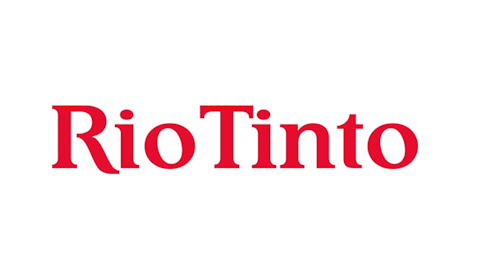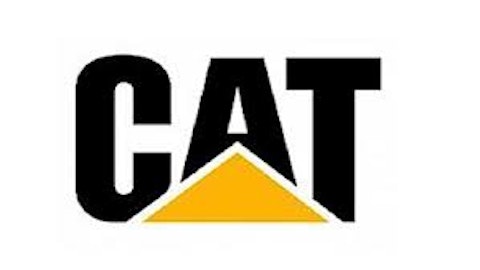Paul Zimnisky currently creates and develops new exchange-traded products as CEO of PureFunds. This past November, PureFunds launched three innovative ETFs, including the world’s first ETF to exclusively invest in the diamond and gemstone industry; it is traded on the NYSE Arca under the symbol GEMS. Prior to PureFunds, Paul worked as a buy-side equity analyst focused on the metals and mining space, and as an ETF arbitrage trader [for more commodity news and analysis subscribe to our free newsletter].
Commodity HQ (cHQ): What can you tell us about new diamond supply?
Paul Zimnisky (PZ): As far as significant new production, the Grib project in Russia is estimated to produce about 4 million carats annually with production commencing towards the end of this year. Right now the project has an estimated mine life of about 20 years. Grib is owned by the Russian oil major LUKoil (London:LKOD).
 But, the largest new diamond project in the foreseeable future is Canada’s Northwest Territories Gahcho Kue mine, estimated to produce 5 million carats annually for at least 15 years with production expected to start in 2015. This project is a joint venture between De Beers (London:AAL) and Mountain Province Diamonds, Inc-Ord Shs (TSE:MPV) with a 51%/49% split, respectively [see also Doomsday Special: 7 Hard Asset Investments You Can Hold in Your Hand].
But, the largest new diamond project in the foreseeable future is Canada’s Northwest Territories Gahcho Kue mine, estimated to produce 5 million carats annually for at least 15 years with production expected to start in 2015. This project is a joint venture between De Beers (London:AAL) and Mountain Province Diamonds, Inc-Ord Shs (TSE:MPV) with a 51%/49% split, respectively [see also Doomsday Special: 7 Hard Asset Investments You Can Hold in Your Hand].
Other projects of note are Russia’s Botuobinskaya mine, expected to begin production in 2015, and what would be Quebec’s first diamond mine, Renard, expected to commence operations in 2015-2016. Both projects are estimated to produce between 1.5 million and 2.0 million carats annually. Botuobinskaya is owned by Russian state run Aktsionernaya kompaniya ALROSA ZAO (MCX:ALRS), and Renard is owned by Quebec-based Stornoway Diamond Corporation (TSE:SWY).
Its been 10 years since a new major diamond mine with an output of at least 1 million carats annually commenced production. The last example is the Diavik mine in Canada’s Northwest Territories, which began commercial production in 2003. The project’s economic open-pit depth has already been reached and has since been converted to an underground mine with only about 7 years left of production. The Diavik mine is owned by Rio Tinto plc (LON:RIO) and Dominion Diamond Corp (TSE:DDC), 60%/40% respectively.
Bottom line, there is not a lot of new production coming on online, and existing mines are approaching depletion levels. Using Bain & Company’s 15 years of 6% annual growth in global diamond demand number, there does not appear to be enough new supply coming online in the coming years to offset new demand.
cHQ: How big of an impact has the structural change of DeBeers had on the diamond world?
PZ: Most people think that De Beers still has complete control of the industry, but they don’t. In the mid-1980s De Beers controlled almost 90% of global diamond supply and did in fact use this power to control prices. But with new discoveries in the second half of the 20th century in Russia, Australia and Canada, it became very difficult for De Beers to maintain control of supply as some of these new industry players chose not to participate in the De Beers model.
By the early 2000s, De Beers gave up on the monopolistic model, and restructured the company to focus on branding the company, not the whole industry. Today, De Beers controls less than 40% of global diamond supply through its mines and distribution company. De Beers is not even the world’s largest diamond player in terms of carats produced anymore, Russia’s Aktsionernaya kompaniya ALROSA ZAO (MCX:ALRS) is [see also A Deeper Look At Russia’s Commodity Industry].
I would not go as far as saying that the industry is now “fragmented,” but on a relative basis diamond prices are being driven by supply/demand dynamics more than ever before.
cHQ: How does the Popigai crater and other supply from Russia impact diamond prices?
 PZ: It’s funny how the Popigai crater headline got so much publicity last year, but no one has heard any developments since. My understanding is that there are diamonds there, but they are of very low quality, so low quality that it’s not even economic to mine them. Generally speaking, diamonds fall into two categories, gem-quality and industrial-quality. Diamond mines produce both qualities of diamonds, but without gem-quality diamonds a mine is not economic. Almost all industrial quality diamonds are more economic to produce synthetically than via mining.
PZ: It’s funny how the Popigai crater headline got so much publicity last year, but no one has heard any developments since. My understanding is that there are diamonds there, but they are of very low quality, so low quality that it’s not even economic to mine them. Generally speaking, diamonds fall into two categories, gem-quality and industrial-quality. Diamond mines produce both qualities of diamonds, but without gem-quality diamonds a mine is not economic. Almost all industrial quality diamonds are more economic to produce synthetically than via mining.
That said, Russia probably has the largest gem-quality diamond reserve on the planet in the Sakha Republic. Sakha, also referred to as Yakutia, is an autonomous republic in Northeast Russia, bordering the Arctic Circle. Almost all of Russia’s diamond production is owned by the state diamond company Aktsionernaya kompaniya ALROSA ZAO (MCX:ALRS). ALROSA has 9 primary diamond mines, 10 alluvial mines, and 2 mines in development. In 2012 Aktsionernaya kompaniya ALROSA ZAO (MCX:ALRS) mined 26% of the world’s diamond supply (De Beers mined 22%). Aktsionernaya kompaniya ALROSA ZAO (MCX:ALRS) has a very small publicly traded free-stock float, which trades very thinly on the Moscow Exchange, but for years Russia has expressed interest in selling a portion of the company through an IPO. Most recently in May, Aktsionernaya kompaniya ALROSA ZAO (MCX:ALRS) publicly disclosed a planned share sale of up to 14% of the company in late fall of this year.
cHQ: How can investors make an allocation to diamonds?
PZ: Physical diamonds have traditionally been difficult to invest in because they lack “fungibility,” meaning they all have unique characteristics – thus there is no futures exchange for diamonds. So the expertise required to buy physical diamonds, combined with a lack of pricing and liquidity, has really limited the number of investors. That said, the very highest quality, rarest diamonds have been a good investment, and I would say the returns can be equated to that of rare art work or fine vintage sports cars.
As far as investing in engagement-ring-quality gems, these diamonds are the industry’s bread and butter, and I think the best way for an investor to play this is via the stocks of the companies in the industry. This is why last November at PureFunds, we launched the PureFunds ISE Diamond/Gemstone ETF (GEMS). The fund currently holds 26 stocks, 22 of which are traded outside of the U.S., representing all aspects of the diamond and gemstone industry. We believe that as the diamond supply/demand story plays out, these companies will benefit.
cHQ: What are the benefits of holding diamonds and other gems in your portfolio?
PZ: The rapidly growing middle-class in Asia has adopted the tradition of gifting diamond engagement rings. This is a brand new trend, and a driver of significant new demand for the industry. So I think when you look at this new demand driver with a forecast of minimal new diamond supply, you get a really nice fundamental scenario that is supportive of the industry.
Don’t forget to subscribe to our free daily commodity investing newsletter and follow us on Twitter @CommodityHQ.
Disclosure: No positions at time of writing.
This entry was posted in Commodity Producers, Diamonds, Hard Assets and tagged GEMS. Bookmark the permalink.
Commodity HQ is not an investment advisor, and any content published by Commodity HQ does not constitute individual investment advice. The opinions offered herein are not personalized recommendations to buy, sell or hold securities or investment assets. Read the full disclaimer here.





